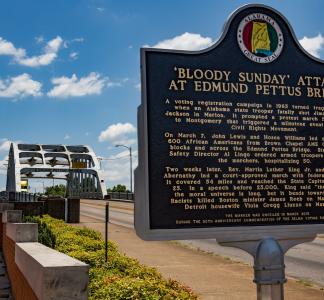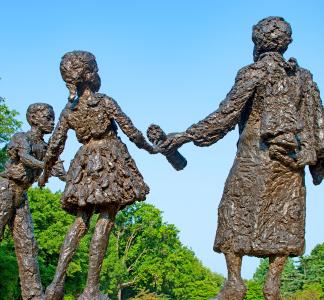Asian American, Native Hawaiian & Pacific Islander history is alive in these 10 parks and other sites
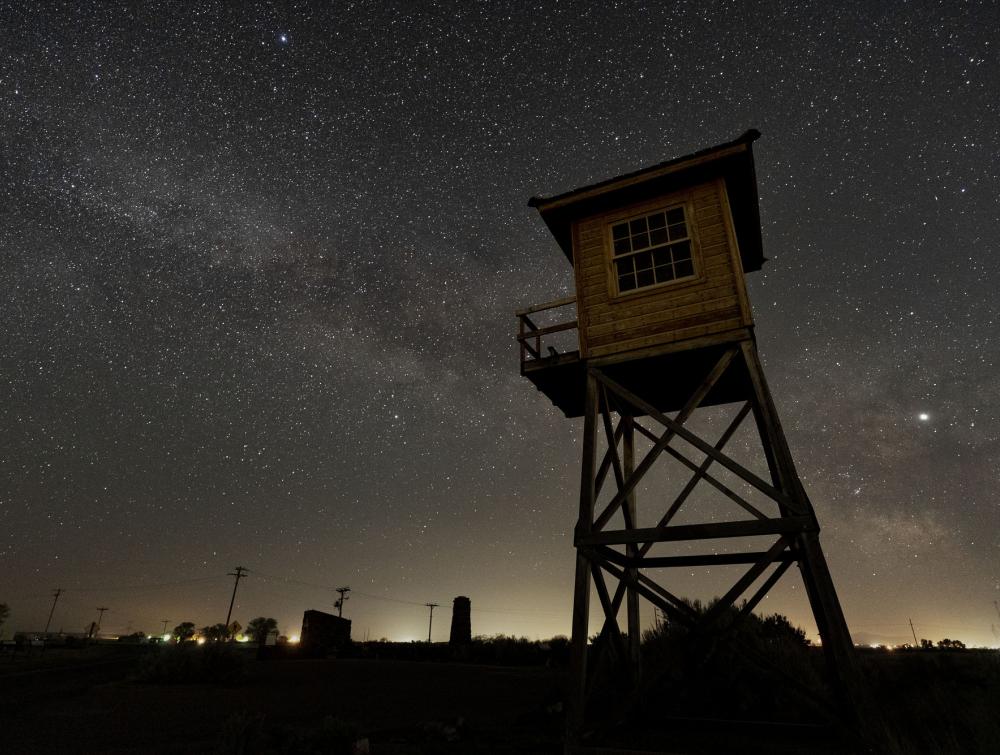
The Minidoka reconstructed guard tower under the stars in Idaho.
Stan Honda, NPS
Sites celebrate AANHPI communities’ resilience and culture
Asians, Asian Americans, Pacific Islanders and Native Hawaiians have a rich history and cultural heritage that is often ignored in the U.S. And unfortunately, when stories are retold about AANHPI communities and experiences, they tend to center on hardship and exclusion--from the early Chinese immigrants who helped build the first transcontinental railroad to the Japanese Americans who were imprisoned in internment camps during World War II.
Asian American, Native Hawaiian and Pacific Islander (AANHPI) heritage is an integral part of the rich tapestry of American history and culture.
As we’ve mentioned lots of times, parks and monuments must be more reflective of the U.S.’ diversity and chronicle the past in a more honest and inclusive way—and that certainly includes the achievements of AANHPI people. Public lands should also address the ongoing impacts of colonization, dispossession and cultural erasure on these communities (and take care to distinguish between and among different Asian cultures).
Nevertheless, the often-painful stories currently told in parks and monuments are important to remember and can inform our pursuit of more inclusive and just policies. And it’s not all negative: the U.S. also contains sites that tell stories of peace and partnership.
Here are some of the parks and historic sites that preserve and share the stories of Asian American, Native Hawaiian and Pacific Islander people and communities in this country.
Former internment camps, across the U.S.
During World War II, approximately 120,000 Japanese Americans, two-thirds of whom were American citizens, were forcibly removed from their homes and sent to internment camps in remote locations throughout the country. This policy of internment was based on the hateful, unfounded idea that Japanese Americans were a security threat to the country and had to be confined for the duration of the war. The internment experience was traumatic and had long-lasting effects on Japanese-American communities, including the loss of property, livelihood and civil rights.
The National Park Service manages several former internment camps, including Hono‘uli‘uli in Hawai‘i, Minidoka in Idaho, Manzanar and Tule Lake National Monument in California and Amache in Colorado. These sites serve to inform current and future generations about a shameful part of U.S. history. They also tell the stories of how Japanese Americans were able to maintain traditions, assert their identities and resist oppression during internment by continuing cultural and religious practices, artwork, food and political activism.
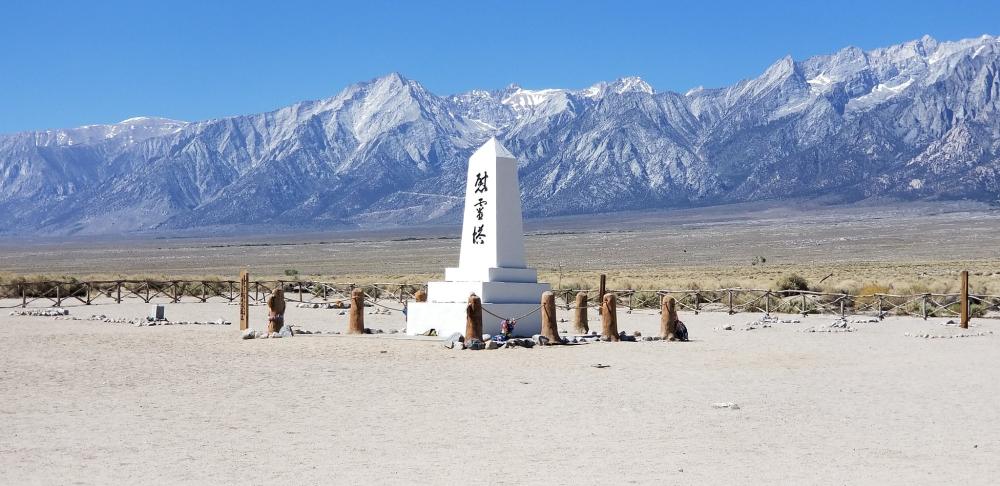
Manzanar cemetery in California. Over 10,000 Japanese-Americans were forced to live in this 500 acre compound for the duration of World War II.
Cameron Cooper, Flickr
Golden Spike National Historical Park, Utah
Thousands of workers from different ethnic and cultural backgrounds helped build the first transcontinental railroad, which linked the U.S. from east to west. However, the contributions of the 15,000 to 20,000 Chinese immigrants who worked on the railroad had been largely ignored until recently. At first railroad companies were reluctant to hire Chinese workers, but they soon proved to be essential. They worked through frigid winters and blazing summers, and many died from accidents and disease.
Golden Spike National Historical Park honors the legacy of these early Chinese immigrants and their vital work on the Transcontinental Railroad and memorializes those who lost their lives during its construction.
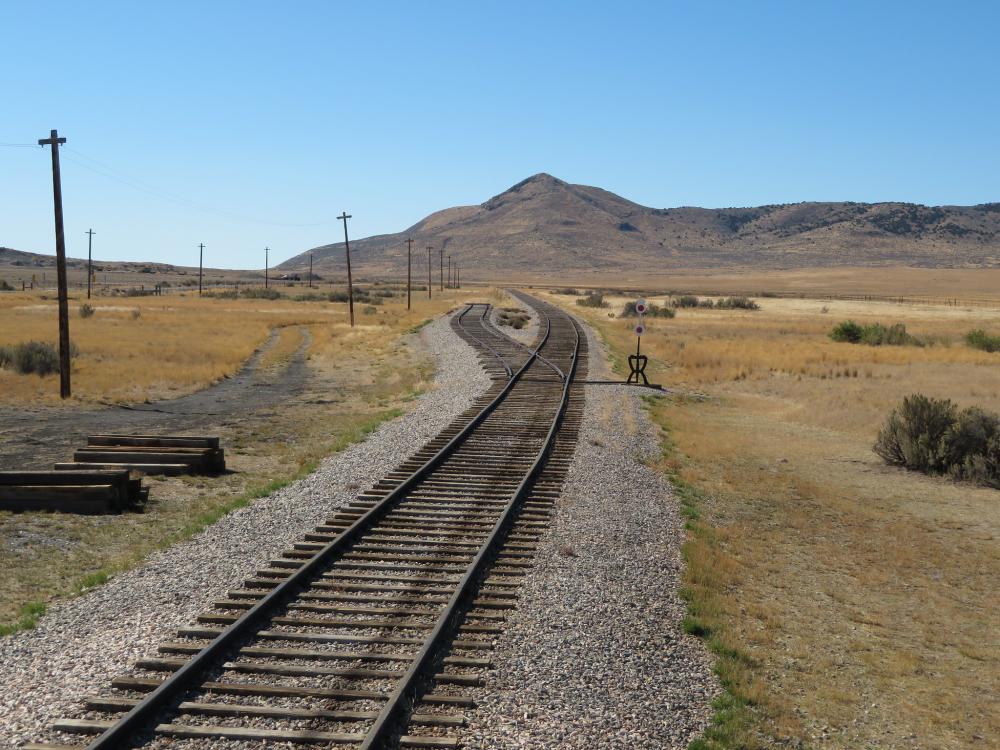
Train tracks at Golden Spike National Historical Park in Utah.
Ken Lund, flickr
National Mall, Washington DC
Every year thousands of people travel to Washington, DC, in the beginning of spring to see the cherry blossoms around the Tidal Basin. About 3,000 beautiful “Sakura” trees were shipped from Yokohama in February of 1912. They were a gift from Japan and an act of landscape diplomacy and design initiated by First Lady Helen Taft. Just north of the Tidal Basin, also surrounded by cherry trees, rests a centuries-old granite Japanese lantern presented to the city in 1954 as a symbol of friendship and cultural partnership between Japan and the U.S. after World War II.
Another significant monument is the Japanese American Memorial to Patriotism During World War II. It honors the Japanese Americans who were forcibly removed from their homes and placed in internment camps during the war, as well as those Japanese Americans who served in the U.S. military. The memorial features a wall inscribed with the names of the 10 internment camps, as well as a bronze sculpture of two cranes representing hope and healing.
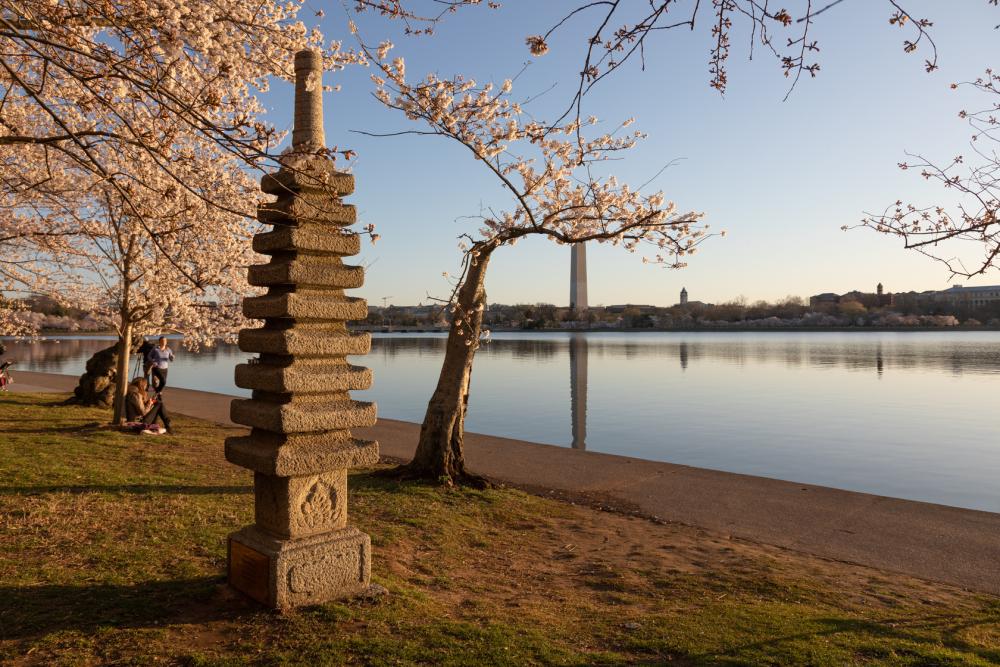
Japanese pagoda at the tidal basin surrounded by cherry blossoms.
Kelsey Graczyk, NPS
Ala Kahakai National Historic Trail, Hawai'i
Native Hawaiians’ unique cultural heritage has been shaped by their connection to the land and the ocean. But since the U.S. annexed their islands after the Kingdom of Hawaii was overthrown in 1893, their history is one of colonization, dispossession and resistance . The loss of sovereignty and the forced assimilation of Native Hawaiians into American society have had long-lasting effects on their communities, including the loss of language, culture and land. Today, Native Hawaiians continue to fight for their rights and recognition as Indigenous people, and to preserve their cultural heritage.
Ala Kahakai, which means "trail by the shoreline,” is a 175-mile network of ancient, historic and modern trails in the Hawaiʻi Island. It was established in 2000 to preserve, protect and interpret traditional Native Hawai'ian culture and natural resources.
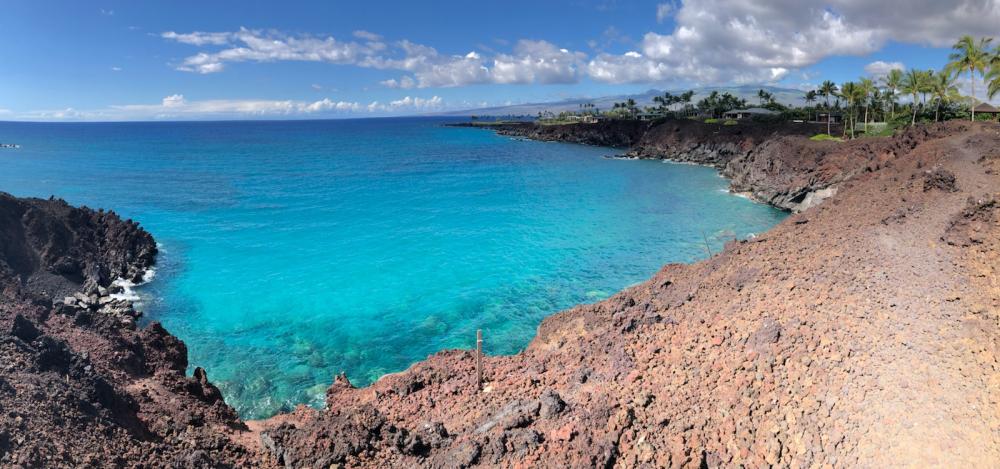
Part of the ala hele (coastal trail) system in South Kohala, ʻAnaehoʻomalu.
NPS
National Park of American Samoa
Polynesians developed a unique culture and society based on their close relationship with the sea and their strong sense of community and family. However, in the late 19th century, the archipelago was divided by colonial nations, including the U.S. American Samoa officially became a U.S. territory starting in 1900. Under American rule, the Samoan way of life was disrupted, and local customs and traditions were often suppressed to fit American standards.
Fortunately, American Samoa has been able to maintain many aspects of its cultural identity and traditions. The Samoan language is now taught in schools and traditional practices such as fa'a Samoa (the Samoan way of life) continue to be celebrated and passed down through generations.
The National Park of American Samoa, located on the islands of Tutuila and Ofu, protects coral reefs, sea turtles and other sensitive wildlife. It also offers opportunities to learn about Samoan culture and history, with exhibits and programs that highlight the Archipielago's rich heritage.
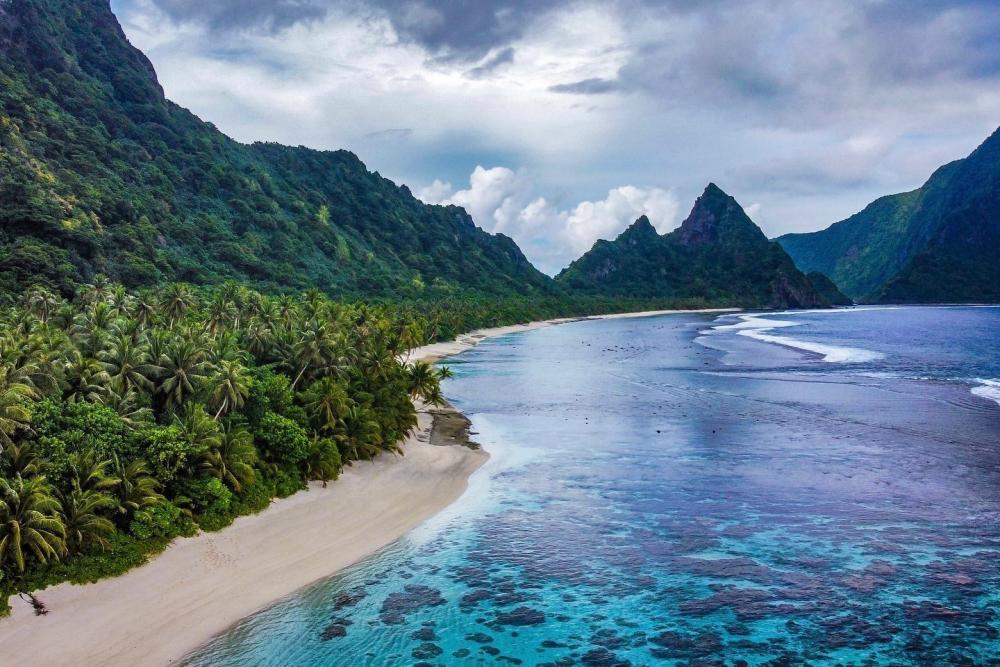
About 4,000 acres of the park is underwater. From the mountaintops to the coast - is rainforest.
Valentine Vaeoso
War in the Pacific National Historical Park, Guam
The U.S. has had control over Guam since the end of the Spanish-American War in 1898. Like other U.S. territories, Guam is underrepresented in government and overwhelmed by military development. This has led to concerns about the impact on the environment and the health and safety of residents.
The island played a significant role in World War II since it was occupied by Japanese forces for more than two years before being retaken by the U.S. in 1944. During those years under Japanese rule, the Chamorros of Guam suffered immeasurable cruelty and about 700 people died. The War in the Pacific National Historical Park commemorates the bravery and sacrifices of the Chamorro people during the war. The park also protects the natural, scenic and historic values of Guam.
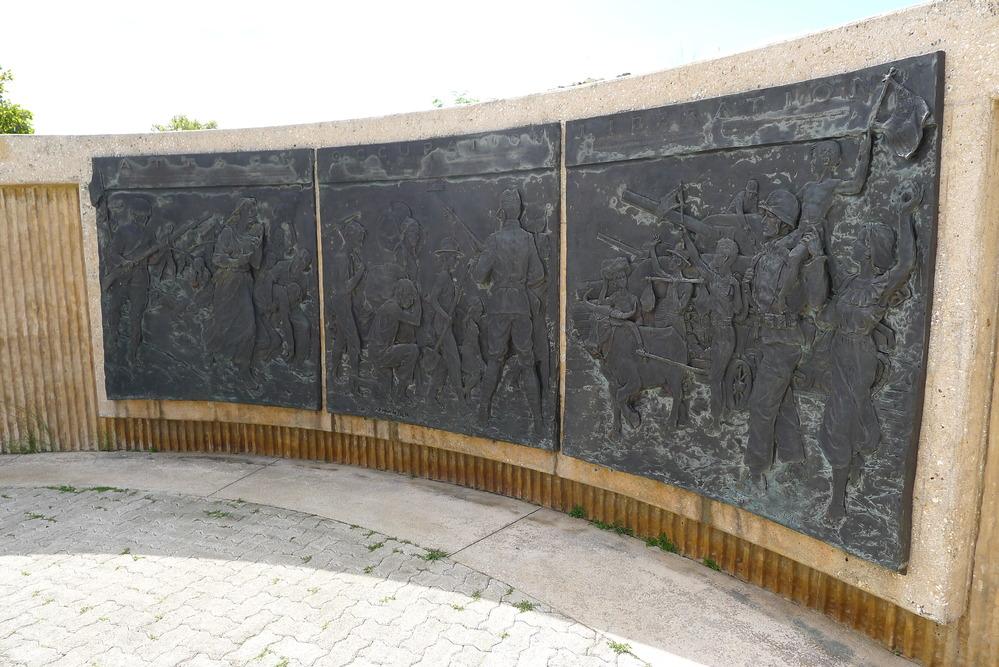
A memorial at the Asan Beach Unit of the War in the Pacific National Historical Park.
NPS Park Cultural Landscapes Program
American Memorial Park, Northern Mariana Islands
Just north of Guam are the Northern Mariana Islands, a U.S. commonwealth. The islands were originally part of the Spanish Empire and were later colonized by Germany and Japan. After World War II, they came under U.S. control and in 1978 they became a commonwealth.
The islands also played an important role during World War II when they were recaptured from Japan by the U.S. It marked a major turning point in the war in the Pacific. Unfortunately, the local population suffered greatly during the fighting and its aftermath; The American Memorial Park honors the courage and sacrifice of the Chamorro and Carolinian civilians who were killed in those battles on Saipan, Tinian and the Philippine Sea in 1944.
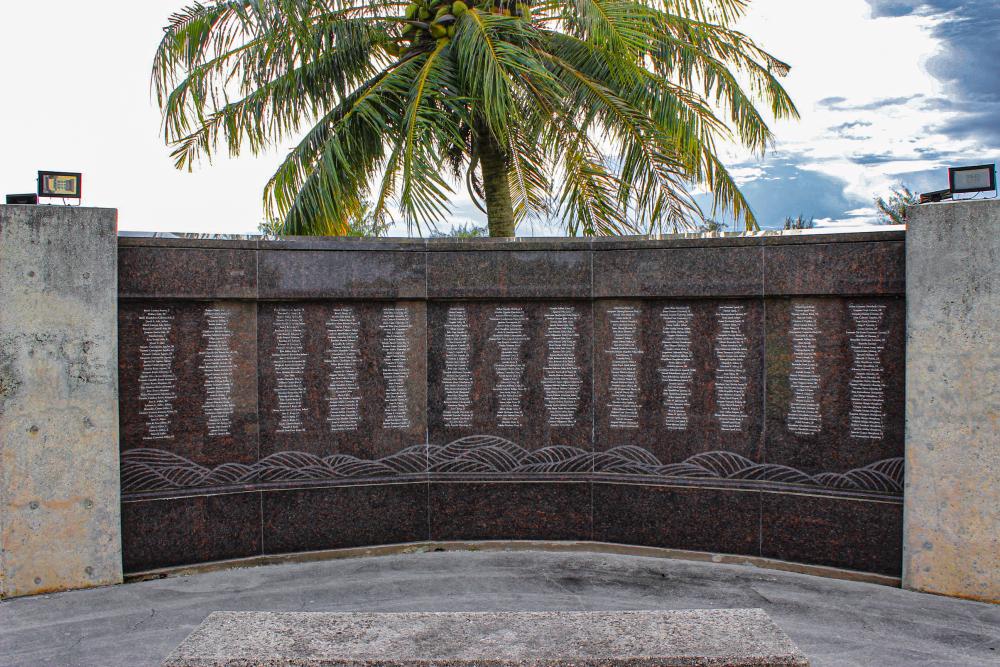
10 granite panels inscribed with 929 names of indigenous Chamorros and Carolinians who died during World War II
Jether Yobech
Yosemite National Park, California
An interesting story you might not have heard about is that of Tie Sing, a backcountry cook working for the United States Geological Survey. In 1915, Sing, the son of Chinese immigrants, joined an expedition to Yosemite, later known as the Mather Mountain Party. His food helped sustain and influence the cartographers and conservationists who campaigned to preserve Yosemite and mapped out the park.
Visitors to one of the most famous national parks in the country can celebrate his memory and influence by hiking Sing Peak, a 10,552-foot peak named after him.
But Sing wasn’t the only person of Chinese descent who played an important role in Yosemite's history. Before it was even designated as a national park, Chinese workers, some U.S.-born and some immigrants, helped install stonework for the Tioga Road and roads around Wawona. As tourism developed in the area, these workers were also essential in providing services such as cooking, farming, cleaning and ranching.
Cesar Chavez National Monument, California
We’ve talked about Dolores Huerta’s influential role in the Farmworkers Movement. Another person who was a major figure in the movement was Larry Itliong, a Filipino-American labor organizer and civil rights activist. Just like Huerta and César Chávez, Itliong played a central role in the founding of the United Farm Workers (UFW) union. He became well-known in the 1960s for spearheading the Delano grape strike. Even after leaving UFW, he kept fighting against injustices and advocating on behalf of farm workers, immigrants and Asian Americans.
While the monument primarily explores the legacy of César E. Chávez, it also highlights Itliong’s important work and influence on the Farmworkers Movement.
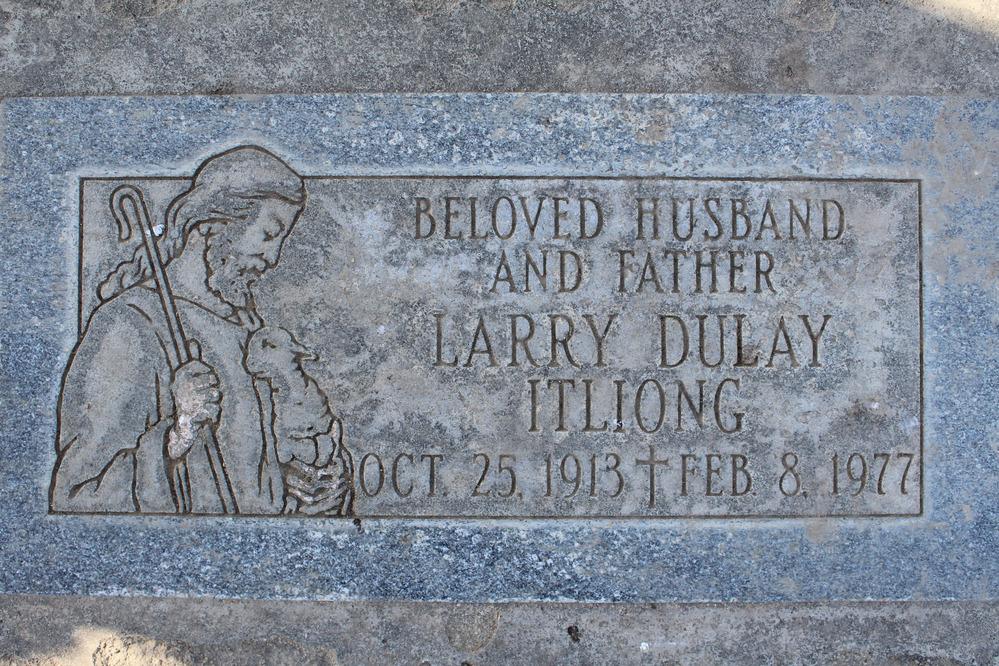
The grave marker of Larry Itiong at the North Kern Cemetery.
NPS
Fort Vancouver National Historic Site, Oregon
Immigrants from China and Japan in the 19th and 20th centuries played important roles at the Vancouver Barracks, a U.S. Army facility. In the 19th century, Chinese immigrants helped build and maintain the fort and served as laborers and tradespeople. They faced significant discrimination and prejudice, suffering physical attacks and exclusion from public spaces In the early 20th century, the site served as a training center for many Japanese-American soldiers.
Fort Vancouver National Historic Site serves as a reminder of the region's complex history and the diverse communities that have shaped it over time. It also preserves and tells the stories of important Asian Americans such as Leah Hing, the first Chinese American woman to earn a pilot's license; Louis Lee, the official photographer of the Vancouver Kaiser Shipyards during World War II; and Private Kensichi Hayashi, who served at the post during World War I.
